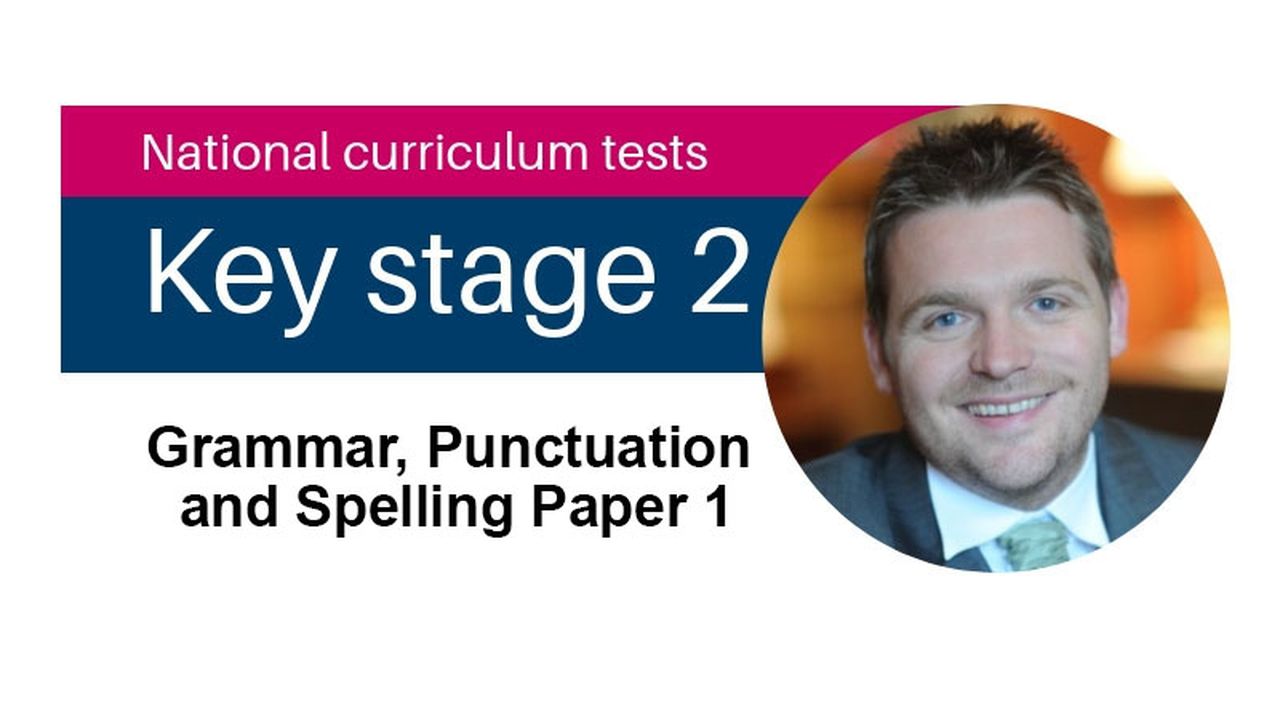6 common mistakes pupils make on the Grammar, Punctuation and Spelling Paper 1 test
We spoke to Darryl Keane, an ex-SATs examiner, about common mistakes made on Grammar, Punctuation and Spelling Paper 1.

Darryl Keane has worked in education for well over a decade. During his time as a teacher, Darryl was an examiner for Pearson, marking hundreds of SATs papers from children all over the country. He provides insight into the most commonly made mistakes pupils make on the Grammar, Punctuation and Spelling Paper 1.
1. Forgetting capital letters and punctuation
Arguably, this a rule for life, but it is incredibly common for pupils in the stressful throes of the SATs for them to forget all-important capital letters and punctuation when it is not explicitly asked for (and even when it is). Most teachers will have reminded children about capital letters and punctuation until they are blue in the face but may be tempted to allow the mark in practice tests. Children are more likely to learn from their mistakes; be harsh.
Our Practice SATs Question Sets will not mark an answer correctly if the answer requires capital letters and punctuation and they have been omitted by the student.Children are instead given precise and instant feedback to address this vital error. These Question Sets allow for pupils’ mistakes and give them the opportunity to learn from them by being able to have another go.
2. ‘ly’ adverbs
It is a very common misconception that all adverbs end in ‘ly’, or that all words that end in ‘ly’ are adverbs. In writing tasks, this is less of an issue and we might encourage pupils to use ‘ly’ words in their writing to spice it up at a more basic level. But this kind of common misunderstanding is a problem when it comes to Paper 1. Pupils were tested specifically on this understanding in the 2018 Paper 1, where pupils were presented with several words ending in ‘ly’ and were then required to identify the adverb.
Learning by Questions has several Question Sets that can help to deal with this kind of misunderstanding of adverbs. Using and Identifying Adverbs will help those who need a basic understanding of the word class, and Express Time, Place and Cause using Conjunctions, Adverbs and Prepositions will address this common mistake more deeply.
3. Only ticking one
Whilst for the grammar, punctuation and spelling papers pupils are being tested on their grammar, punctuation and spelling knowledge, it’s heartbreakingly common for pupils to trip up because of reading skills. The time-pressure and the abnormal atmosphere can cause pupils to miss vital instructions in questions like ‘tick two’.
LbQ grammar and reading Question Sets contain many questions where pupils will be required to provide more than one answer, like in Using Relative Clauses.
4. Not reading all the options
Similarly, pupils deciding on an answer before reading all possibilities is a question of reading skills and test best practice. Encouraging pupils to slow down and ensure they read all possible answers before they commit will definitely help in the long-run. Equally, those less confident about the answer will benefit from the modelling of a process of elimination − it could be worth an integral mark or two.
Many of our questions provide pupils with multiple-choice answers, including our series of SATs Practise Question Sets. They are designed to have the look and feel of the actual papers whilst providing pupils with the chance to learn from their mistakes by being able to have another go after receiving instant feedback.
5. Incorrectly punctuating speech
Inevitably, a question requiring pupils to punctuate direct speech will come up on the test. It’s not uncommon for children (and even adults) to find using inverted commas confusing, especially under pressurised circumstances.
If this is an area of weakness in your class, regular modeling of correct speech punctuation is vital, and children should have the chance to practise this skill in all of their writing work throughout the year, making corrections where necessary. Using LbQ’s Using Inverted Commas to Show Direct Speech will address all the common misconceptions and highlight exactly where gaps need filling.
6. Incorrectly formed capital letters
If a capital letter is not clearly so, a pupil can lose marks. This was also the case for punctuation included in sentences not correctly formed. Right-leaning commas caused quite a stir in 2017 when children were denied marks for semicolons that failed to meet strict official standards. News earlier this year suggested that markers will be more lenient with punctuation in 2019, but capital letters could still catch out pupils who don’t clearly accentuate the characteristics of capital letters.
It is vital that in any piece of writing that is done in class, children are picked up on their ‘questionable’ capital letters and shown the clear differences with each letter.
This article is part of a series provided to us by ex-SATs examiner Darryl. You can also read 6 common ways fluent readers lose marks on the reading SATs paper and 10 common maths mistakes seen by SATs examiners.
All our Question Sets are available to anyone who registers for a free account with Learning by Questions, as well as over 1,100 other Question Sets that cover the National Curriculum in maths, English, and science.